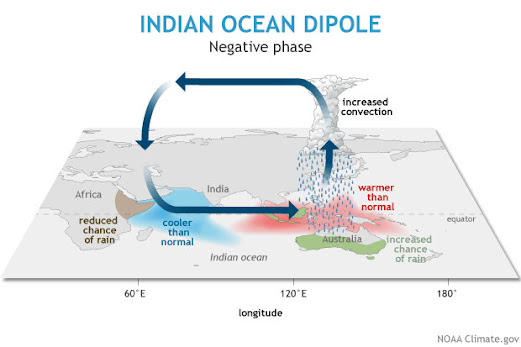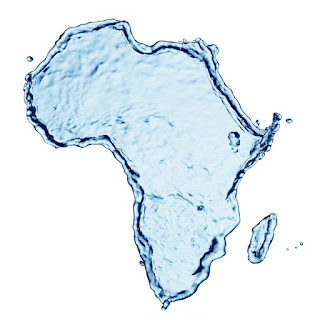The influence of ENSO and IOD on water trends in Africa
Following the study cases I explored in the previous blog posts, I will discuss the influence of climate patterns on extreme weather events in Africa. The two events worth discussing are El Nino Southern Oscillation (ENSO) and Indian Ocean Dipole (IOD). ENSO has an influence around the Tropical Ocean, where El Niño tends to increase precipitation from warming the ocean surface, with La Nina cooling down the ocean surface and decreasing. Even though it is not geographically located next to Africa, previous studies have suggested that ENSO has influenced the amount of heavy rainfall in 1970-2000 in Eastern Africa, and it is generally considered to be a driver behind drought in Southern Africa through the inter-annual climate variability created in this region. Furthermore, ENSO has an influence on the Indian Ocean Dipole, directly involving Eastern Africa and surrounding areas of the Indian Ocean.
Indian Ocean Dipole can be defined as the difference in sea
surface temperature between two regions within the Indian Ocean. A positive IOD phase, being cooler water temperature in the East Indian
Ocean and warm temperature in the West Indian Ocean, is most relevant to the
study cases discussed, as it tends to increase heavy rainfalls and floodings in
Eastern Africa. (Figure 1) Inversely, a negative IOD tends to increase rainfall in parts
of Australia, and bringing below-average temperatures from changing wind
patterns in most parts of Africa. It is
important to note that the intensity of the IOD has been significantly higher
as climate change intensifies, observable in the 2019 positive IOD phase, which was the
strongest in the last 6 decades and is gradually intensifying. Furthermore, it is expected that extreme IOD events, such as floods, and
droughts, will happen every 6 years in
the 21st century, being three times more than in the 20th
century.
Figure 1: Indian Ocean Dipole Positive Phase
The influence of these climate patterns on precipitation is heavily
argued in various research. For example, a statistical analysis performed in
Nigeria between seasonal rainfall of different regions and IOD Mode Index
suggested that IOD events increase and decrease precipitation in Nigeria,
despite being non-contiguous geographic regions. (Ezedigboh et al.,
2018) For the case of Madagascar, IOD events tend to increase rainfall in the
northwestern and southern regions. (Randriatsa et al., 2022)
This would coincide with the increased rainfall causing severe landslides
in Antananarivo and frequently worsening cyclones in Eastern Madagascar.
The increasing influences of both ENSO and IOD due to environmental change
emphasizes the need to predict the impacts of these environmental variables on
rainfall. Endris et al.’s (2019) study on future rainfall trends associated with ENSO/IOD changes found
that there would be an increase in rainfall anomalies in Eastern and Southern
Africa, as well as an increased teleconnection between rainfall changes from
ENSO/IOD in the remaining regions of Africa.




Really interesting post on the interplay of El Nino, IOD and climate change on weather patterns in Africa. It seems the nature of that interplay is incredibly complex. I wonder how prepared societies can be for the changes in weather patterns you indicate are coming.
ReplyDeleteThank you for your comment! I am also unsure about this questionam looking forward to see how countries individually will adapt to this natural trend.
Delete